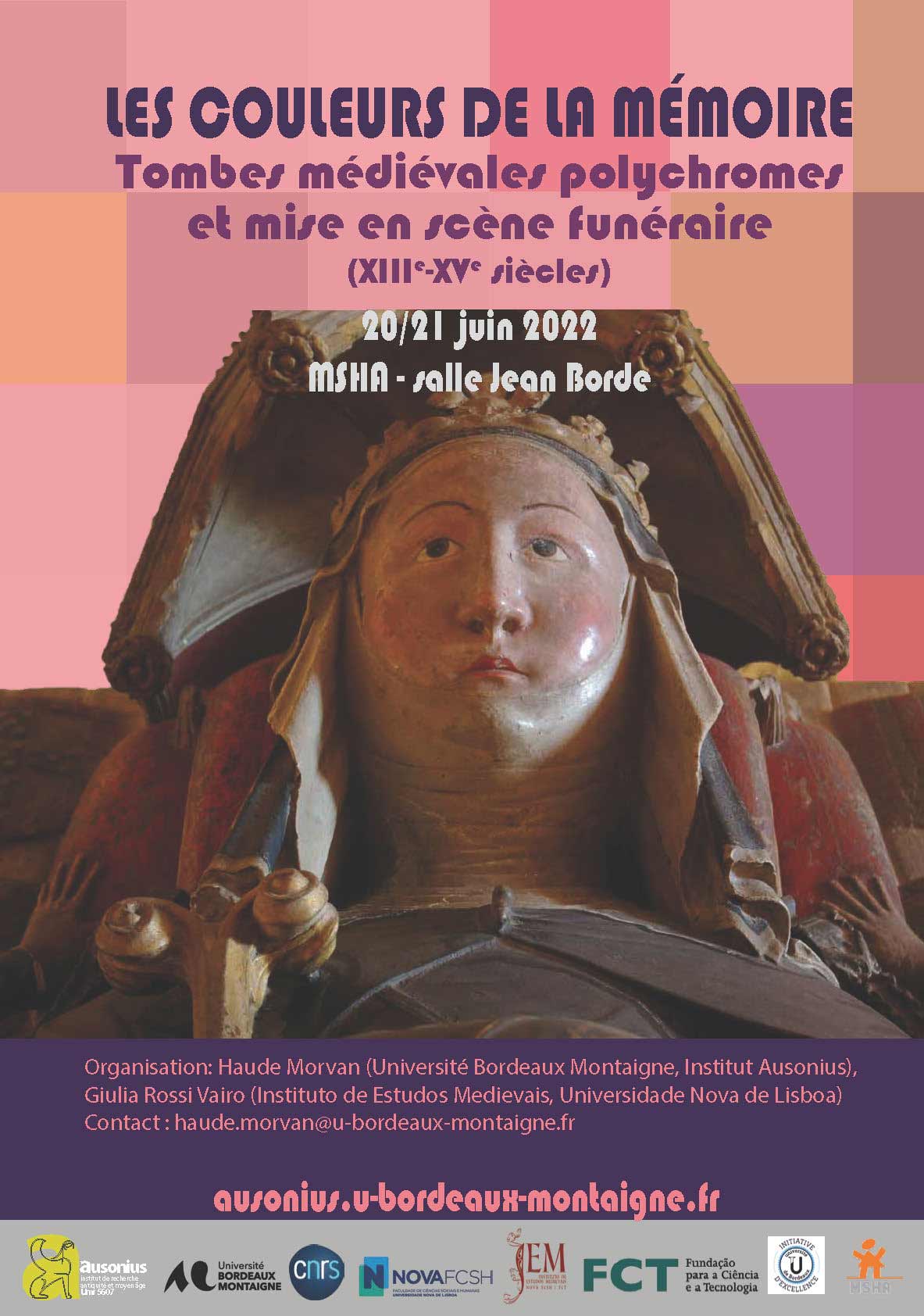Workshop “Les couleurs de la mémoire. Tombes médiévales polychromes et mise en scène funéraire (13e-15e siècles)”
20.06.2022 - 21.06.2022
Université Bordeaux Montaigne
Pessac, France

Color played an important role in the presentation of the deceased and his or her memory in the funerary art of the late Middle Ages. The carved stone or wooden tomb was often painted, but it could also be made from materials chosen for their chromatic effect, such as enameled metal or certain colored stones. In some cases, the funerary monument itself was part of a device including wall paintings and fabrics, in connection with ritual practices.
The permanence (or reactivation) of memorial practices around a deceased person, sometimes for several centuries, led to a restoration of the polychromy of certain monuments, adapted to the taste of the time. The restitution of this polychrome dimension of medieval funerary art and its interpretation implies an interdisciplinary approach.
Through the interventions of a dozen European researchers who will present work in progress, these days will address different cases of study and different methodological issues. This meeting will conclude the first phase of the program “Medieval Art Across Time >> (ldEx Bordeaux), led by Haude Morvan, and is part of a cycle of conferences on medieval funerary art organized by Giulia Rossi Vairo and Joana Ramôa Melo in Lisbon in 2017 and 2019 (Souls of Stone. Funerary Sculpture: from Creation to Musealization; lnterventions in Memory. Modern Era Restorations of Medieval Funerary Monuments, 15th-20th centuries).
